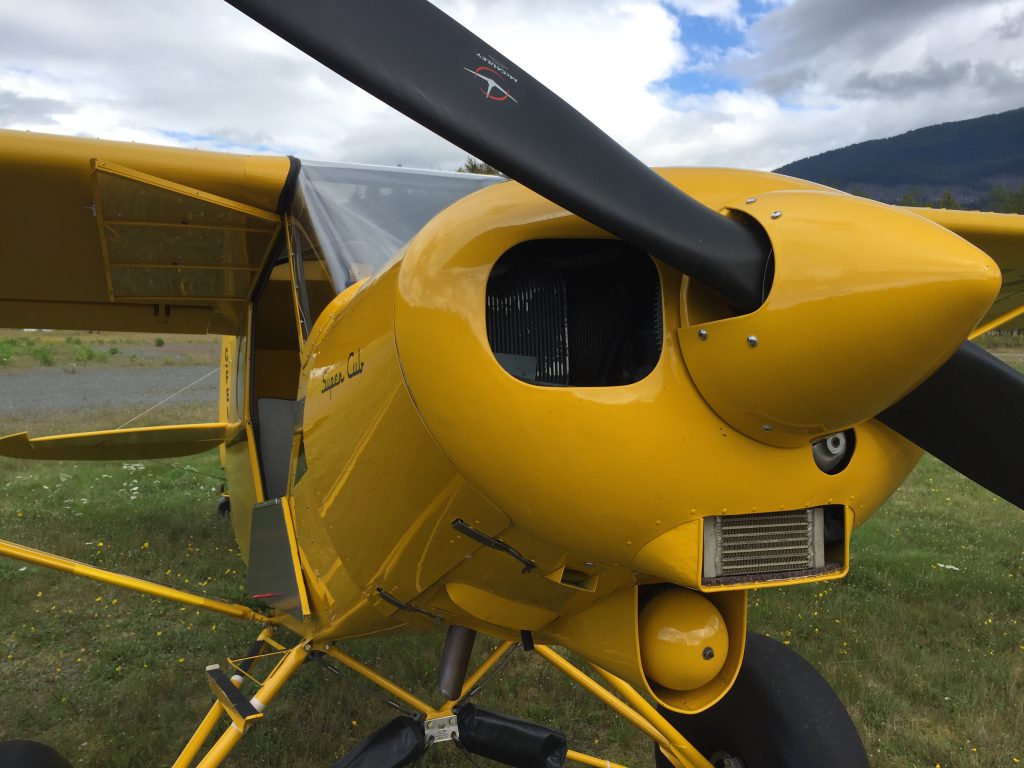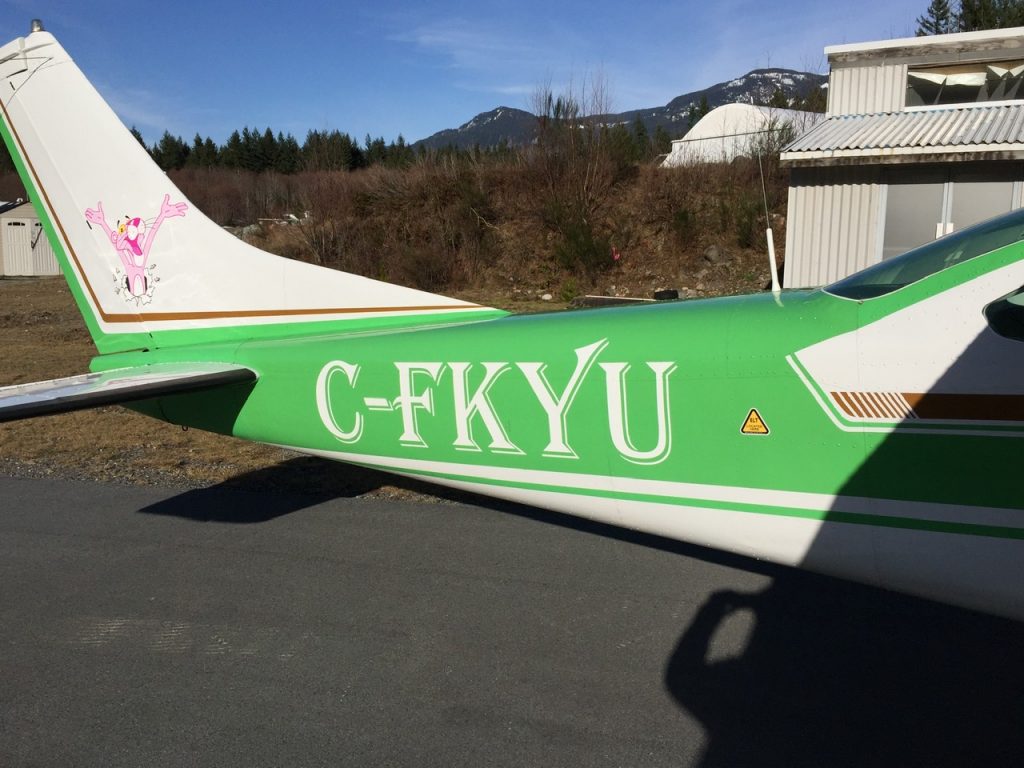
I can provide training for pilot licences, ratings, recency training, type checkouts, insurance checkouts and aerobatics on your own aircraft. Also, I do not provide multi engine or instrument rating training. Please read the following information to determine if your aircraft is suitable, and contact me if you have any questions.
Aircraft suitability.
Not all aircraft are suitable trainers. Most small aircraft with fixed pitch propellors, and some with constant-speed propellors, can be used as trainers for the private and commercial licences. The aircraft must be certified for intentional spins, or you will have to do the spin training portion of your licence at a flying school which has a spin certified aircraft. Generally, any aircraft used for license training must be unmodified. This means no STOL kits, speed kits, vortex generators, fancy wingtips, big engines, Alaskan Bushwheels, etc. Also, some aircraft types just are not good trainers, being too fast, too powerful, too unstable, or just too much of a handful. To be sure, contact me before you buy. I have experience training pilots on over 50 different types of aircraft.
Please note that I will NOT fly ultralight aircraft, owner-maintenance category aircraft or amateur-built aircraft.
Also, I will NOT fly third-party aircraft for training towards a Private Pilot License. Checkouts or training towards a Commercial Pilot License or a rating are okay. Third party aircraft refers to aircraft that are not at least partially owned by yourself, your immediate family, or a company in which you are a director.
I will provide aerobatic training on properly certified and equipped aircraft.
Aircraft equipment.
The aircraft must be equipped with instruments appropriate to the level of licence being sought. This means airspeed, altitude, compass, and needle and ball or turn coordinator for the private licence, and sixpack plus one of VOR, ADF or GPS for the commercial licence. All required instruments must function correctly.
Full dual control including brakes is required. (Center-pull brakes is acceptable for Pipers.)
Properly functioning radio and intercom system with transmit capability for the instructor are required.
Mode C transponder is required (except Yukon).
Harnesses must be 3, 4 or 5 point. Lap belt only is not acceptable. For aerobatics, a Hooker Harness, 5-point acro harness or 3-point harness plus backup lap belt are required.
In tandem aircraft, there must be adequate heat in the rear seat for winter flying.
A carbon monoxide detector must be installed.
The windshield must not be crazed, scratched or cloudy.
The aircraft must be equipped with a GPS enabled 406 MHz ELT. Alternatively, a 121.5 MHz ELT or non-GPS 406 ELT, plus one of Spot, inReach, Spidertracks, Skytrax or other electronic flight following device will be acceptable. I will supply a Spot for a small fee.
Survival gear appropriate to the season and geographical area must be carried. I will supply my own, but I don’t share.
Documentation.
All documents required by CARs must be present and valid.
You must have insurance as required by the Canadian Aviation Regulations. You must have me named specifically as an approved pilot on your insurance policy. I will supply any required information to your insurance company. I am fully insured, but my policy covers me, not you and not your aircraft.
All required maintenance must be up to date and properly signed off.
You must sign and agree to my rules for privately owned aircraft.
You must sign a form releasing me from any liability arising from your flight training.
Solo flight.
For recreational and private pilot students, all solo flights must be supervised by me. This means that, for each solo flight, you will be assigned certain things to practice, and briefed on them before you take off. You can’t just go out flying. My regular hourly fee applies for supervising solo, as I have to be on duty while you are flying. (Not applicable for commercial pilot training.)
Minimum fee.
Due to the lower dispatch reliability of private aircraft, if you book me and we are unable to fly due to an aircraft snag, I require 24 hours notice or there will be a fee of $120.00. Be sure of your aircraft’s readiness before you book.
And finally, the aircraft must be in good repair, free of snags and acceptable to your instructor.

